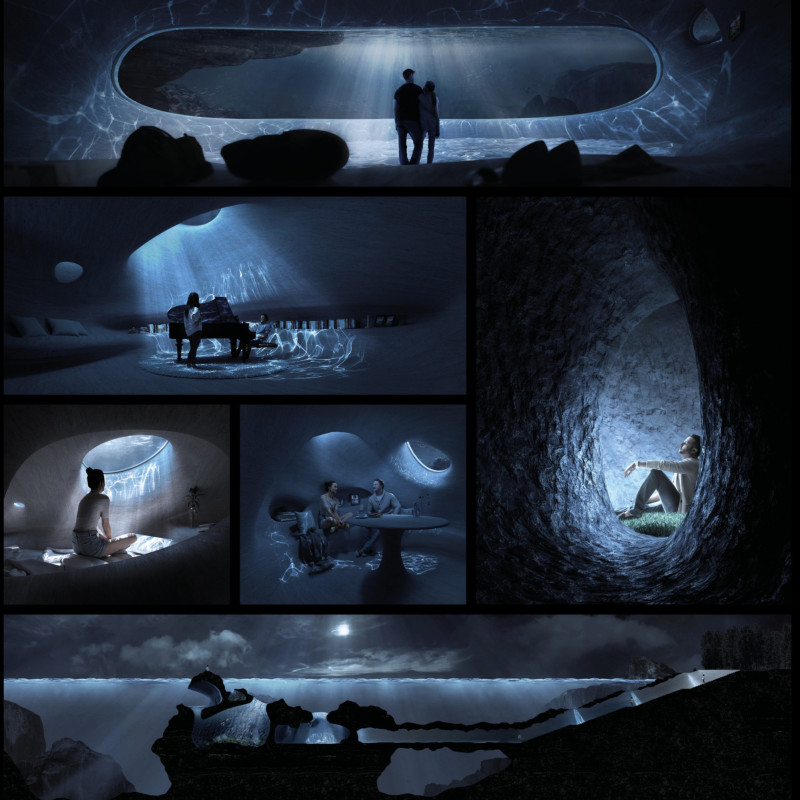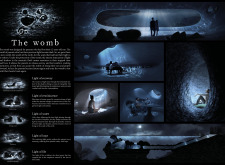5 key facts about this project
The Womb is designed as a sanctuary for parents who have lost a child. Located in a calming environment, the space serves to promote healing and emotional reflection. The design concept builds around the idea of the womb as a protective area that allows parents to process their grief while finding hope and comfort in their memories.
Conceptual Framework
The main idea is to create a place that reflects the different stages of grief. Each part of the layout serves a specific function, enhancing the healing experience through careful organization of space. Light and shadow play important roles throughout the design, symbolizing the balance between grief and hope. This creates an atmosphere that resonates with the emotional journey of the parents.
Unique Spaces
The project contains several distinct areas that address various aspects of mourning. In the meditation room, a horizontal window is positioned to filter light, casting gentle shadows that offer a sense of calm and introspection. This environment encourages parents to reflect and find comfort in their thoughts, helping them to connect with their feelings.
In the piano room, a powerful beam of light creates a blurred visual effect. This invites parents to remember their lost child. The piano becomes a tool for expressing emotions, reinforcing the bond between the parents and their cherished memories of the child.
Transitional Pathways
A notable feature is the corridor leading to the light of amniotic fluid. This pathway symbolizes a shift from darkness to light, representing the journey from sorrow to acceptance. The variations of light and shadow along this path deepen the emotional experience, guiding parents towards healing and renewal.
Design Elements
Furthermore, the bedroom embodies hope, as soft light gently awakens parents in the morning. The kitchen and dining areas symbolically reflect life continuing amid loss. Together, these spaces illustrate a revival of life through thoughtful design, ensuring that light permeates areas that may feel silent or empty. The architecture creates an environment that not only honors memory but also encourages progress in the healing process.
A notable design detail can be seen in how light interacts with different surfaces throughout the day. This dynamic relationship shifts and changes, mirroring the emotional highs and lows experienced by parents as they navigate their grief.



















































